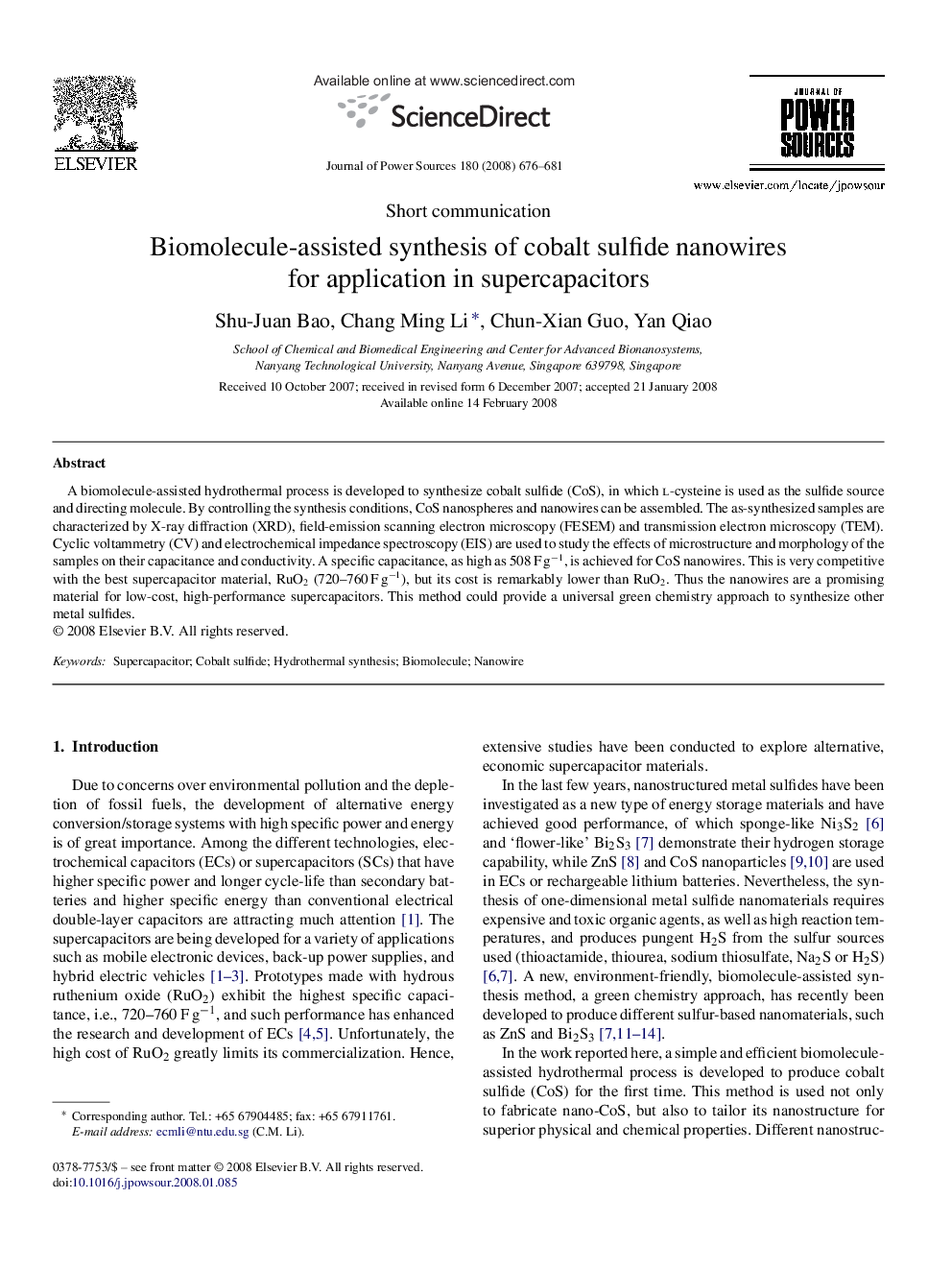| Article ID | Journal | Published Year | Pages | File Type |
|---|---|---|---|---|
| 1290625 | Journal of Power Sources | 2008 | 6 Pages |
A biomolecule-assisted hydrothermal process is developed to synthesize cobalt sulfide (CoS), in which l-cysteine is used as the sulfide source and directing molecule. By controlling the synthesis conditions, CoS nanospheres and nanowires can be assembled. The as-synthesized samples are characterized by X-ray diffraction (XRD), field-emission scanning electron microscopy (FESEM) and transmission electron microscopy (TEM). Cyclic voltammetry (CV) and electrochemical impedance spectroscopy (EIS) are used to study the effects of microstructure and morphology of the samples on their capacitance and conductivity. A specific capacitance, as high as 508 F g−1, is achieved for CoS nanowires. This is very competitive with the best supercapacitor material, RuO2 (720–760 F g−1), but its cost is remarkably lower than RuO2. Thus the nanowires are a promising material for low-cost, high-performance supercapacitors. This method could provide a universal green chemistry approach to synthesize other metal sulfides.
